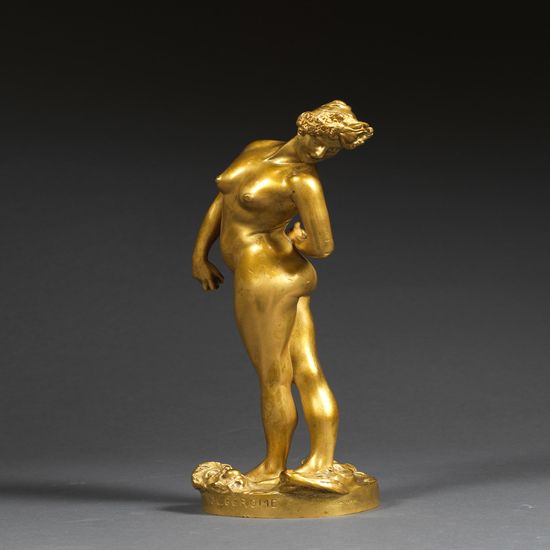Jean Léon Gérôme
In 1859, he sent to the Salon a Death of Caesar and two small compositions, full of erudite details, one depicting a gladiator detail and entitled Ave Caesar, the other depicting King Candaule. In 1861, he published : Phryne in front of the Areopagus, Socrates coming to get Alcibiades from Aspasie, The Two Augurs. To the same salon, he sent a very finely observed and rendered oriental scene, The Egyptian Straw Chopper, and a marvel of meticulous execution, Rembrandt biting an etching board. His best works were inspired by the orientalist movement: The Prisoner and the Turkish Butcher, The Prayer, The Gate of El-Hacanyn Mosque, The Slave Market, The Walking Market in Cairo, and The Walk of the Harem.
He often painted historical scenes such as Louis XIV and Molière (1863), The Reception of the Ambassadors of Siam in Fontainebleau (1865) and The Death of Marshal Ney (1868).
As early as 1862, his canvases were widely distributed, in particular due to the fact that he married Marie Goupil, the daughter of Adolphe Goupil, a renowned art publisher.
Gérôme was also a skilled sculptor. His Rétiaire and his Sagittaire are two excellent figurines. His groups Gladiators, Anacreon, Bacchus and Love, and his statues of Omphale (1887) and Bellone (1892) (this sculpture, in ivory, metal and precious stones, was exhibited at the Royal Academy in London and attracted much attention), Tanagra, are all remarkable works. He also undertook a series of sculptures of conquerors, worked in gold, silver and gems: Bonaparte entering Cairo (1897), Tamerlan (1898) and Frederick the Great (1899). It is also to Gérôme that we owe the statue of Duke d'Aumale in front of Chantilly Castle (1899).
In 1864, he became professor of painting at the School of Fine Arts.
Gérôme enjoyed great success during his lifetime, so much so that he had his bust in the courtyard of the Institute. However, at the end of his life, his fierce hostility towards the Impressionists, whom he considered "the disgrace of French art", contributed to the decline of his popularity.
|



